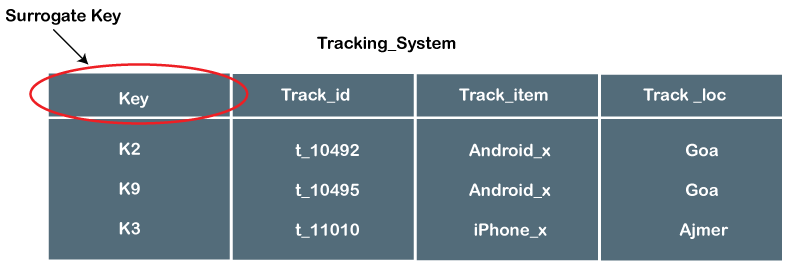-
DBMS Tutorial
- dbms-tutorial
- what-is-database
- types-of-databases
- what-is-rdbms
- dbms-vs-rdbms
- dbms-vs-file-system
- dbms-architecture
- three-schema-architecture
- data-models
- data-model-schema
- data-independence
- dbms-language
- acid-properties-in-dbms
Data modeling
- er-model-concept
- notation-for-er-diagram
- er-design-issues
- mapping-constraints
- dbms-keys
- dbms-generalization
- dbms-specialization
- dbms-aggregation
- convert-er-into-table
- relationship-of-higher-degree
Relational data Model
- relational-model-concept
- relational-algebra
- join-operation
- integrity-constraints
- relational-calculus
Normalization
- functional-dependency
- inference-rule
- dbms-normalization
- dbms-1nf
- dbms-2nf
- dbms-3nf
- dbms-bcnf
- dbms-4nf
- dbms-5nf
- relational-decomposition
- multivalued-dependency
- join-dependency
- inclusion-dependence
- canonical-cover
Transaction Processing
- transaction
- transaction-property
- states-of-transaction
- dbms-schedule
- testing-of-serializability
- conflict-schedule
- view-serializability
- recoverability-of-schedule
- failure-classification
- log-based-recovery
- dbms-checkpoint
- deadlock-in-dbms
Concurrency Control
- concurrency-control
- lock-based-protocol
- time-stamping-protocol
- validation-based-protocol
- thomas-write-rule
- multiple-granularity
- recovery-concurrent-transaction
File organization
- file-organization
- sequential-file-organization
- heap-file-organization
- hash-file-organization
- b+-file-organization
- dbms-isam
- cluster-file-organization
Indexing and B+ Tree
Hashing
RAID
Misc
- decomposition-algorithms
- storage-system-in-dbms
- data-dictionary-storage
- file-organization-storage
- selection-of-raid-levels
- bitmap-indexing
- buffer-replacement-strategies
- database-buffer
- estimating-query-cost
- query-processing-in-dbms
- evaluation-of-expressions
- external-sort-merge-algorithm
- hash-join-algorithm
- materialization-in-query-processing
- merge-join-algorithm
- nested-loop-join-algorithm
- selection-operation-in-query-processing
- double-pipelined-join-algorithm
- implementation-of-pipelining
- pipelining-in-query-processing
- advanced-query-optimization
- transforming-relational-expressions
- candidate-key
- closure-of-an-attribute
- questions-on-boyce-codd-normal-form
- questions-on-normalization
- questions-on-third-normal-form
- equivalence-of-functional-dependency
- referential-integrity-constraint
- questions-on-lossy-and-lossless-decomposition
- lossy-or-lossless-decomposition-(second-method)
- questions-to-identify-normal-form
- types-of-relationship-in-database-table
- candidate-key-in-dbms
- primary-key-in-dbms
- super-key-in-dbms
- alternate-key-in-dbms
- composite-key-in-dbms
- foreign-key-in-dbms
- surrogate-key-in-dbms
- unique-key-in-dbms
- purpose-of-normalization
- commit-vs-rollback-in-sql
- ddl-vs-dml
- denormalization-in-databases
- er-model-vs-relational-model
SQL Introduction
- sql-introduction
- characteristics-of-sql
- advantage-of-sql
- sql-datatype
- sql-command
- sql-operator
- sql-table
- sql-select-statement
- sql-insert-statement
- sql-update-statement
- sql-delete-statement
- sql-view
- sql-index
- sql-sub-queries
- sql-clauses
- sql-aggregate-function
- sql-join
- sql-set-operation
DBMS MCQ
Interview Questions
Surrogate Key in DBMSA surrogate key in DBMS is the key or can say a unique identifier that uniquely identifies an object or an entity in their respective fields. It is the unique identifier in a database. Here, in this section, we will learn about the Surrogate key, and we will also look at its implementation by looking at some examples. What is a Surrogate KeyA surrogate key is a key with virtual or no actual reason, and it is used for representing the existence for data analysis. Thus, a surrogate key is used for representing existence for data analysis. It is the unique identifier in a database. It represents an outside entity as a database object but is not visible to the user and application. A surrogate key is also known by various other names, which are pseudo key, technical key, synthetic key, arbitrary unique identifier, entity identifier and database sequence number. Difference between Surrogate Key and Primary KeyThe difference between both keys depends on the type of database, i.e., whether it is a current database or a temporal database. It is so because a current database stores only the current valid data, and there exists a one-to-one relationship between both the primary key in the database and the surrogate key in the modeled or outside world. So, in the case of the current database, the surrogate key can be used as the primary key, in respect to the surrogate key only. In the case of a temporal database, there exist many-to-many relationships between surrogate and primary keys. So, for several objects present in a database can correspond to one surrogate key. That's why we cannot use the surrogate key as a primary key for the temporal database and need another attribute with the surrogate key in order to uniquely identify each object in a database. Implementing Surrogate KeyLet's implement an example to understand the working and role of a Surrogate key in DBMS: Consider an example of Tracking_System, where we have the following attributes: Key: An attribute holding the key for each tracking id. Track_id: An attribute holding the tracking id of the item. Track_item: An attribute holding the name of the item that is being tracked. Track_loc: An attribute holding the location of the tracking item. The below diagram represents the above described Tracking_system table:  Point to be noted:From the above table, we can see that the Key attribute of the Tracking_System table is the Surrogate key because the value of the Key column is different for different locations and id of the item. There can be other possible examples of the Surrogate key, which are:
Next TopicUnique Key in DBMS
|